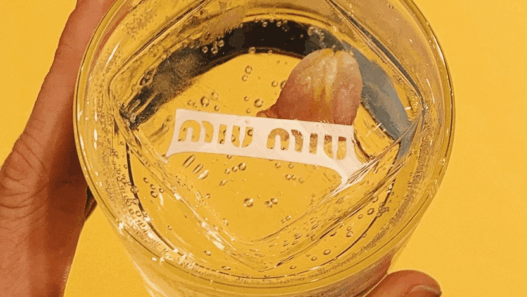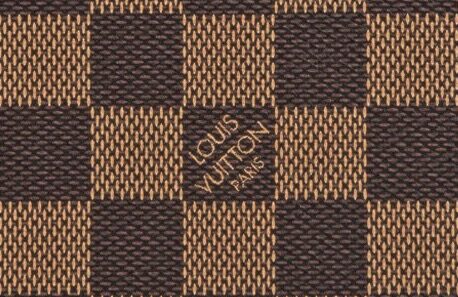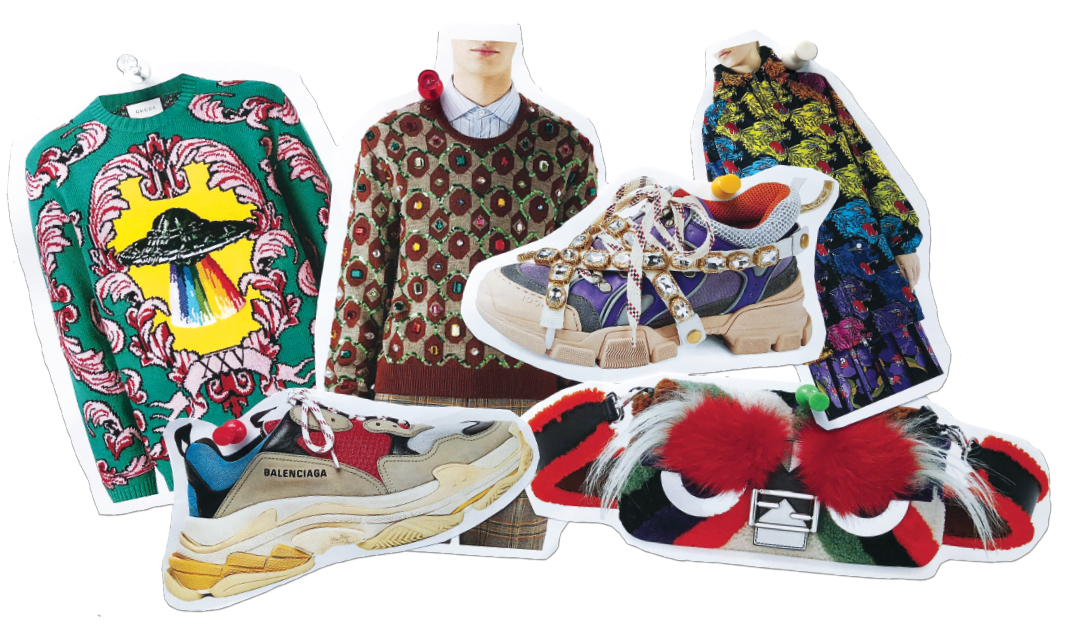Introduction
Since the late 1980s, when international consensus began developing into intellectual property, trade secret mechanisms have also become very important for protection in fashion. A very little understood yet critical form of protection, trade secrets have become a very important tool for fashion houses to protect designs, production methods, and business operations. It serves as a unique layer of protection for an indefinite period, provided secrecy is maintained.
Creative and innovative by nature, the fashion industry prides itself on exclusivity. With the era of fast fashion, employee mobility, and digitalized supply chains, the risk of trade secret misappropriation has never been higher. The article covers the protection of trade secrets in the fashion world, the jurisprudential framework, landmark cases and challenges to enforcement, and protection strategies.
- Understanding Trade Secrets in Fashion
Definition and Requirements
Trade secrets or as the TRIPS Agreement would call it “Protection of undisclosed information” refers to a practice of a company that is generally not known outside of the company i.e. confidential business information that may be sold or even licensed. It provides a competitive advantage to the company and is a product of its internal research & development.
According to the TRIPS Agreement, a trade secret qualifies if it:
- Is not easily accessible.
- Is limited to the knowledge of a limited group of persons.
- Is of commercial value due to its secrecy.
- Is subject to reasonable protective measures.
How Trade Secrets Differ from Other IP Protections
Trade secrets differ from the other forms of IP since they cover a much wider range of information and technology. Unlike, other forms of intellectual property, it is not subject to novelty nor does it expire nor has any government administrative body overseeing it. It is protected by the torts of unfair competition and unjust enrichment. Trade secrets do not create a monopoly over information. The public can’t access it. Also, there is no legislation protecting trade secrets. Many recognise it but there is a lack of independent trade secret law.
Under the Copyright Act of 1957, any literary, dramatic, artistic, sound recording, cinematography, musical, or computer program is protected, and its exclusive rights are held by the creator. However, this is not an absolute protection, to attain the same the works are to be registered, which entails full disclosure of the creation to the public. It is open for objection and scrutiny.
Trademarks and trade secrets are opposites. A trademark is subject to popularity. As the Trademark Act of 1999 puts forth, a trademark is used to refer to any goods or services that are publicly known and accepted. They are also associated with business and it reaps monetary perks. Provides the trademark holder with protection against deceptive or identical marks, businesses, products, or services.
Meanwhile, an IP-like Patent Act of 1970 is there to protect inventions (products) and the process. It has a tenure of 20 years after expiration of which the invention is free for public usage. It has a set of requirements to be fulfilled in other to attain protection and recognition meaning it has to go through several patentability tests. Unlike trade secrets for getting protection for new inventions, a complete disclosure of the information is to be made to the public forum. It also requires prior approval from the government.[i]
Examples of Trade Secrets in Fashion
- Nike’s Flyknit Technology – It was a breakthrough in footwear, a proprietary knitting process that caused minimal waste. This is a patented process that while enhancing the performance of the product also, supported sustainability, and prevented material waste by 60%. Nike has been providing high-performance and eco-friendly footwear making it a market leader, and they have been doing so by keeping their weaving techniques and material composition a trade secret.
- Zara’s Supply Chain Model – what has been putting Zara on the competitive high is its fast production cycle i.e. just 30 days, which is rooted in its proprietary IT system allowing quick adaptation to trends, a trade secret hauling around in the factories of Zara. They have a closely guarded operational model which allows them to maintain efficiency and exclusivity. Their system processes all the real-time data, enabling designers to act swiftly.
- Hermès Saddle Stitching – A closely protected trade secret, known only to a few artisans to maintain exclusivity. This hand-sewing technique, used in its luxury leather goods, creates unparalleled durability and aesthetics that cannot be replicated by machines.
III. Legal Framework Governing Trade Secrets
International Standards
- TRIPS Agreement (1994) – Mandates WTO member states to enforce protections for trade secrets. Protection is subject to the condition that the undisclosed information is protected by the TRIPS Agreement as trade secrets or know-how. Article 39.2 states that the protection should extend to secret information, that has commercial value because it is secret, and has been subject to reasonable efforts to maintain its secrecy.
- EU Trade Secrets Directive (2016) – This proposal harmonizes the existing diverging laws, within the EU to protect trade secrets from being misappropriated.[ii] The TSD aims to protect companies against any form of illegal acquisition, utilization, or disclosure of their trade secrets. It aims to make recovery easier for victims of tortious wrongdoing, foster the exchange of knowledge among enterprises, and support innovation. It also provides redress mechanisms for victims of trade secret misappropriation.
Jurisdiction-Specific Laws
- United States
- The Uniform Trade Secrets Act of 1985, protects from misappropriation and wrongful use, and in case of the loss of a trade secret, the Act provides civil remedies (injunctive or monetary).
- Under the Economic Espionage Act of 1996, the federal government protected trade secrets against misappropriation and provided both civil and criminal penalties to offenders.
- Under federal law, came a new civil statutory scheme for trade secrets Defend Trade Secrets Act of 2016. It provides an opportunity to file lawsuits where the trade secret is related to a product or used in interstate or foreign commerce. Plaintiffs here can recover damages for foreign acts of misappropriation.
- Further, under Section 337 of the Tariff Act of 1930, the International Trade Commission may issue an injunction against the importation of products made using misappropriated trade secrets in the U.S.
- European Union
- The Directive (EU) 2016/943 harmonized within the EU following the existing internationally binding standards, it set out a minimum standard to protect trade secrets.[iii]
- The European Union (Protection of Trade Secrets) Regulation, 2018 implements uniform standards but enforcement varies by country. If a trade secret has been unlawfully disclosed, used, or procured, the regulation provides remedies and civil redress in such distress. It ensures confidentiality is maintained throughout the court proceedings.
- India & China
Both nations have an evolving legal framework but are facing challenges in enforcement. India[iv], although lacks a dedicated trade secret legislation heavily relies on the existing frameworks to safeguard confidentiality.
- In the Indian Contract Act, of 1872 a person can be bound not to disclose any information that is revealed to him in confidence with the use of a contract. The act governs legally binding agreements, essential for modern business transactions. It ensures that contracts are enforceable under Indian law, including those relating to confidentiality and trade secrets.
- Section 43A and Section 72 of the Information Technology Act, 2000 provide for compensation for failure of securing sensitive data. Also, it holds entities accountable for any mishap, imposes criminal penalties, and provides criminal remedies respectively.
Yet, it doesn’t exclusively come forth as a legal protection, and contemporary times still call for a specific trade secret law to protect the commercial nature of transactions, the techniques, business pieces of information, strategies, etc.
In China[v], trade secrets are protected under the Anti-Unfair Competition Law (AUCL). It has defined them as confidential techniques or information with commercial value. Recent amendments in the AUCL have strengthened protection by shifting the burden of proof to the infringer, punitive damages for bad-faith misappropriation, and judicial interpretations were issued by the Supreme People’s Court. Despite these, enforcement remains a challenge.
- Landmark Trade Secret Cases in Fashion
- Adidas America Inc. v. Skechers USA Inc. (2016)
The famous lawsuit between the two footwear-ruling luxury brands became the talk of the town since, the claim by Adidas has begun to be a pressing matter as the Skechers had copied their design of “Stan Smith” sneaker and had misappropriated proprietary technology, including the Boost sole technology. This stirred the issue of the products being barely distinctable which impacted Adidas’ market value. The injunction favoring Adidas ruled Skechers out of further sale of its version of the shoe. In furtherance, the ruling highlighted how diversions through misappropriation of trade secrets and trade dress infringement affect the fashion industry by emphasizing the importance of branding and technology.[1]
- Lululemon Athletica Canada Inc. v. Under Armour Inc. (2017)
This lawsuit focused on the theft of patented fabric technology used by Lululemon to make compression wear by Under Armour. Lululemon’s proprietary rights were impacted while Under Armour argued that functional innovations in apparel are not subject to a monopoly. Although the case was settled outside the court, it did leave a remarkable mark on the importance of technological advancement in fashion and the legal battles over proprietary textile technology.[2]
- Star Athletica, LLC v. Varsity Brands, Inc. (2017)
See cheerleading fits and not to think of Varsity would be baffling. The famous manufacturer of the cheerleading uniforms Varsity Brands, sued Star Athletic contending that its unique design was protected as a trade secret and copyright. The Supreme Court judgment came in favor of Varsity Brands, it also established a distinction between functional features and artistic elements in fashion, a major factor for trade secrets.[3]
- Gucci America, Inc. v. Guess?, Inc. (2012)
Gucci accused Guess of stealing its proprietary designs, particularly its interlocking “G” logo, diamond pattern, and stripe motifs. Gucci argued that this act has put the brand identity on a thin line since the products were not distinctive. The U.S. court ruled in favor of Gucci, awarded them damages but also discarded many of their trade dress claims in the suit. This case highlighted how the brands rely on trade secrets and trademarks to protect their brand image.[4]
- Challenges in Protecting Trade Secrets in Fashion
- Globalization and Outsourcing Risks
Global supply chains are heavily relied on by fashion brands as they’re manufacturing products across the globe. However, as reliable as it is, this becomes a point of risk, risks such as the disclosure of trade secrets, and unauthorized usage by third parties and contractors in this outsourcing could lead to counterfeits and knockoffs. Counties that are not signatories of WIPO or other IP-protecting bodies, or have weak IP laws pose the most risk for brands expanding their business while protecting their trade secrets.
- Employee Mobility and Insider Threats
Being a dynamic industry also brings in frequent job shifts. Employees leaving one company to join the other, or worse, a competitor is threatening. Each employee is valuable and has valuable knowledge of the industry knick-knacks, be it the design processes marketing strategies, or manufacturing techniques. A non-compete agreement protects trade secrets but its enforceability varies by jurisdiction.
- Cybersecurity Threats and Digital Theft
Everything’s digital in this age. Everyone has escaped from that pen-paper pain to a screen now, and this industry is no different. Fashion brands are shifting their way with the design software, experimenting with AI-generated designs, and the cloud storage that is blindly caved into are the major openers for being targeted by cyber espionage. Hackers and competitors steal and disclose proprietary designs and future concepts, unreleased collectings, causing heavy loss and reputable harm.
- Litigation vs. Confidentiality
Going forth with legal action for a trade secret misappropriation comes at its price. It demands that very protected secrets and sensitive information be disclosed, which can throw them off the competitive edge. Out-of-court settlements or alternative dispute resolutions are lately being opted by brands to carry out trade secret disputes confidentially.
- Best Practices for Safeguarding Trade Secrets
- Legal Protections
- Non-Disclosure Agreements (NDAs): Contracts, employees, and business partners need to agree to this since a company’s data and internal mechanisms are all subject to strict confidentiality.
- Non-Compete Clauses: This prevents valuable employees from joining competitors after leaving the company. It is important to safeguard one’s trade secrets.
- Trade Secret Enforcement Programs: Regular internal audits are conducted to detect any leak of data or any illegal activity on the premises. It’s mainly done to prevent any such unauthorized conduct.
- Technological Safeguards
- Blockchain for Supply Chain Security: It prevents unauthorized, illegal access to proprietary materials by creating an immutable record of transactions.
- AI-Based Monitoring: It ascertains any cyber intrusions and insider threats that might lead to any disclosure or fraudulent conduct.3. Corporate Strategies
- Regular Trade Secret Audits: Audits are conducted internally and externally to determine any underlying vulnerabilities and necessitate enforcement.
- Employee Training & IP Awareness Programs: These programs and activities educate the staff on trade secret policies, and also aid in the prevention of any possible future misconduct. It brings the employees into a close-knit circle where they’re valued thus, developing a sense of security and involvement. This ensures a better work environment and understanding of the work and workplace.
VII. The Future of Trade Secret Protection in Fashion
- AI and Digital Fashion
The fashion industry’s landscape is developing and artificial intelligence is having a transformative impact on its reshaping. AI is ushering[vi] in efficiency, algorithmic processes, and unprecedented innovation. AI is the driving force of the innovators in this digital era, they’re exploring new frontiers, unlocking unfathomable possibilities via generative tools, virtual try-on, and fittings, providing consumers with a personalized and intimate experience.
There are risks associated with the use of AI since it uses consumers’ personal data to cater to each profile they seek, all while this can’t be neglected by the industry’s carefully weigh-in data privacy regulations.[vii]
- Alternative Dispute Resolution (ADR)
ADR provides relief from the lengthy, long-drawn process of litigation. It is a better safeguard time-efficient, and cost-effective method. It provides solutions through a single procedure escaping the issues of multiple jurisdictions. Methods like arbitration and mediation, are widely recognized methods of handling disputes.
Trade secrets are sensitive information of any business, in traditional court proceedings which are typically public, the businesses disclose[viii] All such pieces of information are integral to them. Meanwhile, ADR gives the key advantage of confidentiality. Dealt one-to-one and protect the party in dispute and their secrets, maintaining business relationships. Disputes in the fashion industry cover a variety of issues, emerging from distribution, contracts, advertisements, and franchising, among others.[ix]
- Legislative Trends
Trade secrets are still under the veil. Countries are still working on a solid framework to govern and protect trade secrets from misappropriation, theft, or unauthorized usage.
Governments[x] Have to increase the funding for enforcement agencies and technical assistance for countering counterfeiting, protecting uniqueness and novelty from copying, cooperating with international law enforcement, and giving whistleblower immunity.
India does not have a conclusive trade secret law; however, fashion trade secrets are protected under the umbrella of existing intellectual property laws like the Trademark Act of 1999, the Copyright Act of 1957, and the Designs Act of 2000. Each of these acts specifically protects the fashion industry and its brands from getting robbed of its identity and market value.
They preserve the artistic aspects of fashion designs, the visual elements, graphic marks, and brand identification. Even after all this, there is still a call for stringent legislation focused on the protection of trade secrets.
VIII. Conclusion
Trade secrets as invisible as it is to the eyes, underneath all the successful fashion houses and businesses play a critical role in protecting their name, and brand identity, keeping them distinguished from competitors, and keeping up on the competitive edge. Brands have increasingly relied on technological and digital advancements, operational models, and proprietary materials safeguarding trade secrets must be a top priority. Trade secrets aren’t protected by strict laws in most countries, but in one way or another several legislations happen to cover the sensitivity and need of keeping secrets. Implementing legal, technological, and corporate measures will ensure that fashion companies maintain their stance and status quo in the ever-changing dynamic of the market.
References & Citations
- TRIPS Agreement, WTO.
- EU Trade Secrets Directive, EUR-Lex.
- Adidas v. Skechers, Bloomberg Law.
- European Union (Protection of Trade Secrets) Regulations 2018 (S.I. No. 188/2018), Ireland
- WIPO Reports on Trade Secret Protection.
- McKinsey’s 2023 Fashion Industry Report.
- Harvard Business Review on IP in Fashion.
- Adidas Am., Inc. v. Skechers U.S.A., Inc., 890 F.3d 747 (9th Cir. 2018).
- Lululemon Athletica Can. Inc. v. Under Armour, Inc., No. 1:17-cv-01689 (D. Del. 2017).
- Star Athletica, LLC v. Varsity Brands, Inc., 137 S. Ct. 1002 (2017).
- Gucci Am., Inc. v. Guess?, Inc., 868 F. Supp. 2d 207 (S.D.N.Y. 2012).
[1] Adidas Am., Inc. v. Skechers U.S.A., Inc., 890 F.3d 747 (9th Cir. 2018).
[2] Lululemon Athletica Can. Inc. v. Under Armour, Inc., No. 1:17-cv-01689 (D. Del. 2017).
[3] Star Athletica, LLC v. Varsity Brands, Inc., 137 S. Ct. 1002 (2017).
[4] Gucci Am., Inc. v. Guess?, Inc., 868 F. Supp. 2d 207 (S.D.N.Y. 2012).
[i] https://www.mololamken.com/knowledge-how-do-trade-secrets-compare-to-other-types-of#:~:text=Trade%2Dsecret%20rights%20are%20established,provide%20a%20monopoly%20over%20information. (Accessed on 29th January 2025)
[ii] https://single-market-economy.ec.europa.eu/industry/strategy/intellectual-property/trade-secrets_en#:~:text=The%20trade%20secrets%20directive%20in%20short&text=Without%20establishing%20criminal%20sanctions%2C%20the,disclosure%20of%20misappropriated%20trade%20secrets(Accessed on 29th January 2025)
[iii] https://www.wipo.int/edocs/mdocs/mdocs/en/wipo_reg_ip_ge_22/wipo_reg_ip_ge_22_t2.pdf (Accessed on 30th January 2025)
[iv] https://www.copperpodip.com/post/protecting-trade-secrets-in-india#:~:text=The%20Indian%20Contract%20Act%2C%201872%20and%20the,to%20the%20owners%20of%20trade%20secrets%20are (Accessed on 31st January 2025)
[v] https://www.dlapiper.com/en/insights/publications/2024/03/trade-secrets-protection-in-china-case-insights-from-the-record?utm_source=chatgpt.com (Accessed on 1st February 2025)
[vi] https://techpacker.com/blog/design/how-artificial-intelligence-is-revolutionizing-the-fashion-industry/(Accessed on 1st February 2025)
[vii] https://www.theinterline.com/2023/09/07/the-uncharted-legal-frontier-of-ai-in-fashion/(Accessed on 1st February 2025)
[viii] https://juriscentre.com/2023/10/14/fashion-resolution-exploring-adrs-role-in-the-fashion-industry/#:~:text=Confidentiality%20is%20one%20of%20the,sensitive%20information%20and%20trade%20secrets.(Accessed on 1st February 2025)
[ix] https://www.wipo.int/amc/en/center/specific-sectors/fashion/(Accessed on 1st February 2025)
[x] https://americanmarketer.com/2021/02/16/trade-secrets-what-fashion-and-luxury-goods-companies-need-to-know/#:~:text=Misappropriation%20means%20that%20%E2%80%9Cimproper%20means,learns%20for%20its%20own%20business.(Accessed on 2nd February 2025)
Author:


















